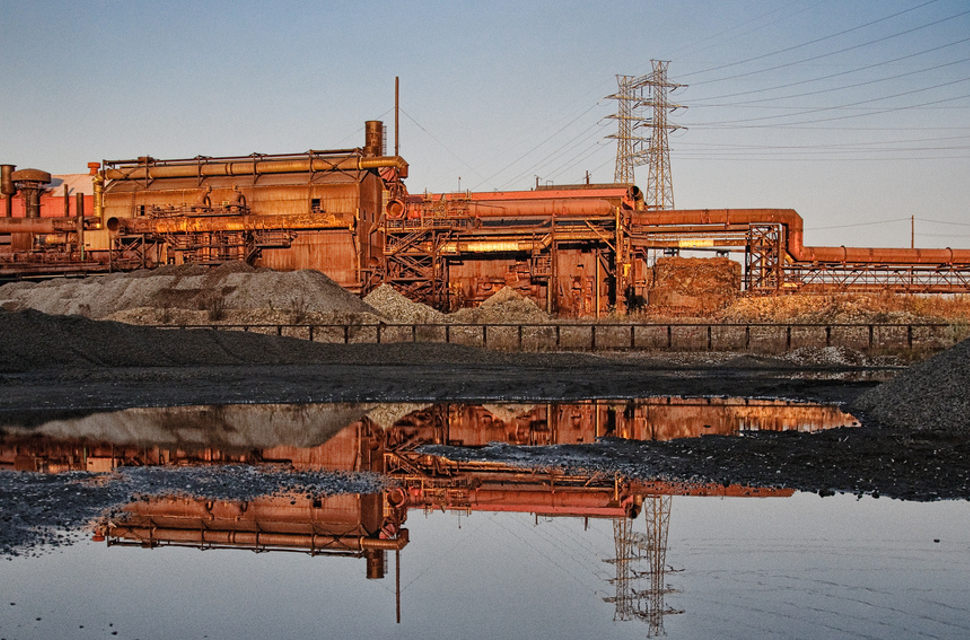Blue Collar Jobs Down in Rust Belt as the Country on the Whole Continues to See Job Growth
Photo credit: Bob Jagendorf on flickr.
New York continues to see the largest losses in manufacturing jobs in the Rust Belt.
The latest state jobs report shows that overall employment grew strongly in 11 states and Washington, DC, while only Georgia lost a substantial number of jobs (-14,100 or -0.3 percent) in July.
Unemployment rates were stable in much of the United States. The largest increases in unemployment were just a 0.2 percentage point rise in Alaska and Maine. Unemployment in Texas fell by 0.3 percentage points.
In the Rust Belt, employment in blue collar jobs (construction, manufacturing and mining and logging) overall fell by 4,900 jobs in July, or 0.1 percent. Compared with July of 2016 the number of jobs in these industries was up by 0.18 percent (10,100 jobs). However, since President Trump took office in January the number of jobs in these sectors has fallen by 12,200 or 0.21 percent. During this time, states that saw the largest job loss were New York (11,400 jobs or -1.38 percent), Ohio (6700 jobs or -0.72 percent) and Pennsylvania (5300 jobs or -0.64 percent. In these states, the blue collar sectors represent 10.23, 19.5 and 15.63 percent, respectively, of total private sector jobs.
Construction jobs in the rust belt were down -0.29 percent in July. Two states added jobs, Michigan, (100) and Wisconsin (600). Among the states that saw the greatest loss of construction jobs, Iowa fared worst, losing 2.92 percent (2,300) followed by West Virginia losing 2.84 percent (900), and Pennsylvania losing 1.19 percent (2,900).
Nationwide, the manufacturing sector gained 6,300 jobs, an increase of 0.15 percent. However, this number is still 0.25 percent lower than this time last year (11,800 jobs). Pennsylvania led the way in July, with a 1.5 percent increase in manufacturing jobs (8,300) largely off-setting the loss of construction and mining and logging jobs this month. Next was Iowa at 0.8 percent or 1,800 jobs, then Wisconsin with 0.2 percent or 1,100 jobs. New York continued to see a large drop off in manufacturing, shedding 1.1 percent of its total in July, or 4,600 jobs. Over the past year, the state has seen the number of manufacturing jobs decline by 4.6 percent or 20,900 jobs. Here, the rate of job loss may be leveling off as New York lost 0.01 percent of manufacturing jobs in the last three months compared to 0.11 in the previous three.
The number of mining and logging jobs fell in the rust belt last month with a loss of 400 jobs, for a total of 90,400 a change of -0.44 percent. There has been job growth in the sector over the past year as the sector has gained 3,400 jobs, a gain of 3.91 percent. Illinois saw a 1.23 percent increase for a gain of 100 jobs followed by Ohio with 0.9 percent (also 100 jobs). The mining and logging sector is not a major employer in the Rust Belt, accounting for just 1.57 percent of all jobs.
There is a very mixed picture on wage growth in these sectors. Over the last year, the average hourly wage in manufacturing in Indiana rose by 4.6 percent, after increases of less than 2.0 percent for the prior three years. Manufacturing wages in Michigan had an even stronger pickup, rising by 7.2 percent over the last year after falling 1.9 percent in the prior twelve months. (More than 80 percent of this gain was from the last six months of 2016.) Wages grew 3.7 percent in Ohio over the last year, up from 2.2 percent the prior year.
On the other side, wage growth in Ohio slowed to 2.7 percent over the last year, down from 5.4 percent in the prior twelve months. Wages were flat in Illinois over the last year, following a year in which they increased by just 0.2 percent.
Overall the picture is one where these sectors have little momentum. The general direction for growth is positive, however not very rapid.
Coal Construction Donald Trump Illinois Indiana Industrial Belt Iowa Kentucky Logging Michigan Mining Minnesota Ohio Pennsylvania West Virginia Wisconsin

